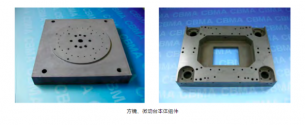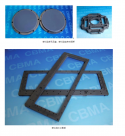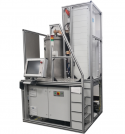High end ceramics for lithography applications.
The semiconductor industry is a strategic industry related to the national economy, politics and national defense security. In the semiconductor industry, the core equipment represented by photolithography machines is the product of highly integrated modern technology, involving many disciplines such as optics, materials science, and computer science. Both the design and manufacturing processes reflect the highest level of relevant scientific and technological fields, and the equipment also places extremely high demands on precision structural parts. As the third generation of emerging materials, advanced ceramics have been introduced into lithography equipment and play an extremely important role.
High-end lithography machines involve high-efficiency, high-precision, and high-stability motion control technology and drive technology , which place extremely high requirements on the accuracy of structural parts and the performance of structural materials. Silicon carbide ceramics have extremely high elastic modulus, thermal conductivity and low thermal expansion coefficient, are not prone to bending stress deformation and thermal strain, and have excellent polishability and can be machined to an excellent mirror surface, so carbonization is used Silicon ceramics have great advantages as precision structural parts materials for key semiconductor equipment such as photolithography machines. Silicon carbide ceramic parts required for semiconductor manufacturing equipment include: workpiece table, guide rail, reflector, arm, Block, magnetic steel frame, suction cup, water-cooling plate, air-floating plate, etc.


To build a photolithography machine, please first prepare these advanced ceramic materials! ! !
Author: Dongguan Nuoyi Precision Ceramic Technology Co., Ltd. Date: 2023-09-19 Readings: 15The semiconductor industry is a strategic industry related to the national economy, politics and national defense security. In the semiconductor industry, the core equipment represented by photolithography machines is the product of highly integrated modern technology, involving many disciplines such as optics, materials science, and computer science. Both the design and manufacturing processes reflect the highest level of relevant scientific and technological fields, and the equipment also places extremely high demands on precision structural parts. As the third generation of emerging materials, advanced ceramics have been introduced into lithography equipment and play an extremely important role.
High-end lithography machines involve high-efficiency, high-precision, and high-stability motion control technology and drive technology , which place extremely high requirements on the accuracy of structural parts and the performance of structural materials. Silicon carbide ceramics have extremely high elastic modulus, thermal conductivity and low thermal expansion coefficient, are not prone to bending stress deformation and thermal strain, and have excellent polishability and can be machined to an excellent mirror surface, so carbonization is used Silicon ceramics have great advantages as precision structural parts materials for key semiconductor equipment such as photolithography machines. Silicon carbide ceramic parts required for semiconductor manufacturing equipment include: workpiece table, guide rail, reflector, arm, Block, magnetic steel frame, suction cup, water-cooling plate, air-floating plate, etc.





